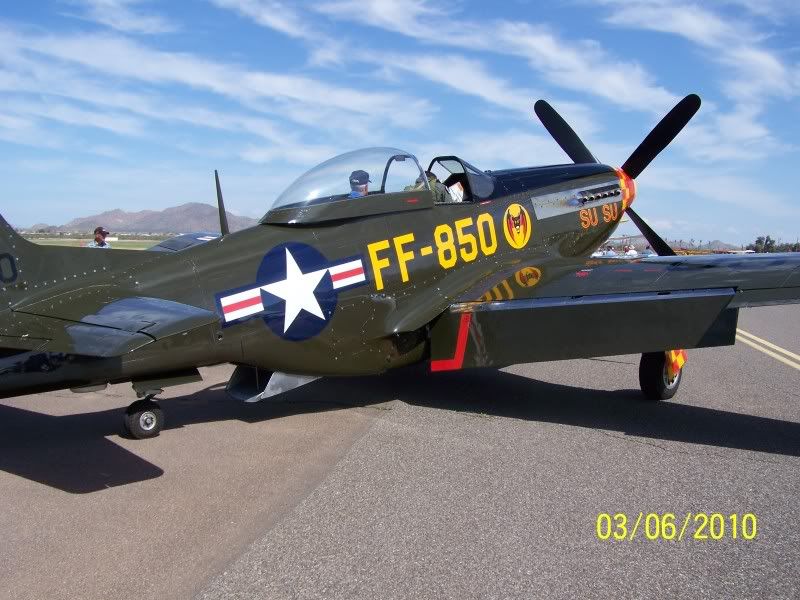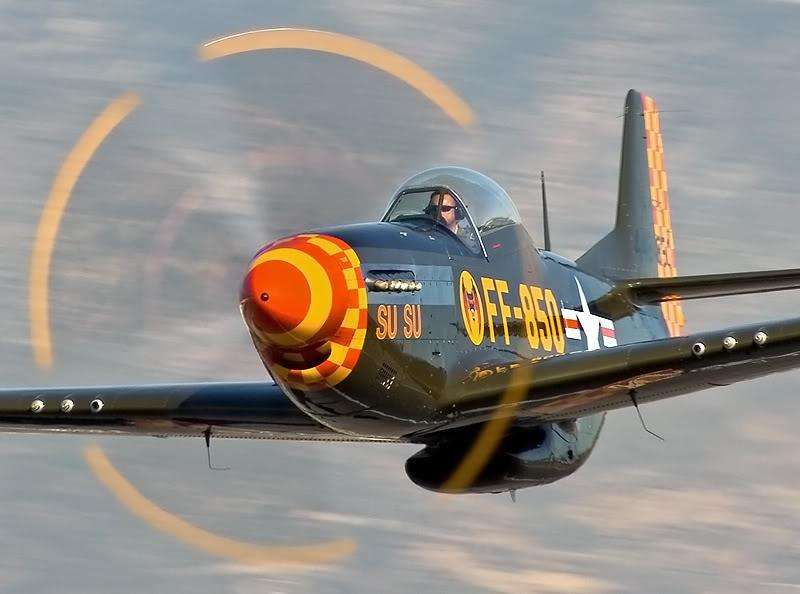One of my agents (I am in insurance) years ago was an instructor on the P-40for Chenault state side when he was training his bunch for deployment for China. He said that they lost a number of pilots on landing. The drill apparently was to fly by the airfield to make sure (I guess, not a pilot myself) that the field was not fouled. Then to circle back to the approach. On the final turn to land, they would not keep airspeed up and drop. He said the P-40was a great airplane but needed good airspeed on low turns. Wonder if the P-51 was the same way.
Number one cause of private pilot crashes, from ultralight on up, is losing airspeed while turning at low altitude. Part of training is learning that although Plane A might have a stall speed with gear and flaps down and power off of, say, 65kts, for every degree of bank you are raising the stall speed (you're trading some wing lift for turning force). So making a 30 deg. bank either downwind leg to base leg, or base leg to final, might need 80kts to be comfortably above stall. And pulling the nose up a tad to correct height adds to the effective stall speed as it also tightens the turn. It can catch the expert as well as the novice. [Technically, air speed is not the controlling factor; what is called Effective Angle of Attack is. A plane can stall at high as well as low speed.]
However, I note that the (non-flyer?) witness said that the plane was approaching the runway "too fast." I wonder what they based that on, bearing in mind that a P51, with its laminar-flow, high loading wings, needs to go fast on approach, much faster than what the guy on the ground may be used to seeing with Cessna 180s and the like.
I think the pilot just undershot, either because that long nose gets in the way of seeing the runway, or he just misjudged his height. Undershooting on approach is probably #2 or 3 (running out of gas is way up there) cause of private pilot crashes, and I believe may be the #1 for commercial airliners. I was taught that if you're going to err, it's better to touch down long rather than short. Short of the runway you will hit rough ground, approach lights, boundary fences and all sorts of crap at high speed and have close to zero chance of walking away. If you land long you will be much slower, be already on the ground, and with luck may just slide off the end of the runway. Or you may elect to ground-loop, even if it means buggering up the undercarriage, which will slow you considerably.



